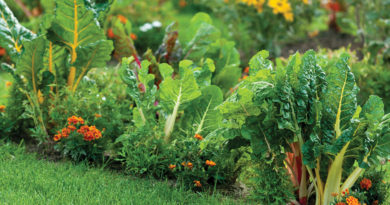Turning Kitchen Scraps into Liquid Fertilizer
Homemade liquid fertilizer is easy to make, eco-friendly, and dirt cheap compared to commercial fertilizers.
Kitchen scraps such as onion peels, carrot tops, and even water from boiled veggies or pasta are just a few of the valuable ingredients that can help your cannabis plants grow strong and healthy. Don’t forget the coffee. In addition to fruits and veggies, diluted coffee is an excellent source of nitrogen, and your plants will thank you in abundance.
Also called compost tea, organic liquid fertilizer made with kitchen waste is fast-acting and full of nutrients. As organic fertilizers break down, they improve the structure of the soil and increase its ability to hold water and nutrients. The best part is, there are no strict rules on what you can and cannot use in your homemade liquid fertilizer. However, you should do your best to avoid mixing grease, oils, fatty meats, and milk products in with your scraps as they could produce a foul odor and harbor pathogens. Let’s have a look at how kitchen scraps can help boost your crop and significantly reduce your household waste at the same time.
Read also:
From Scraps to Supplements
For an organic liquid fertilizer that you can readily make at home, start by gathering up all your kitchen scraps to store in the freezer. To save space, you can pack them into a plastic bag instead of a container. Apple cores, orange peels, cucumber ends, beet leaves, and any produce left on your plate after dinner are excellent choices for your DIY fertilizer. While it’s not necessary, you may also want to toss in some grass clippings and fallen leaves for added nitrogen content. After you’ve collected about four cups of kitchen waste, it’s time to blend up your ingredients.
Blender Bender
When you’re ready, it’s time to thaw your frozen ingredients and puree them in a blender. Use enough water to make a smooth consistency and then repeat the blending process until all the scraps are blended and resemble something like a pureed vegetable soup — hearty and nutritious. After blending all the material, you can pour it in a bucket.
It’s recommended that for every blender full of scrap puree, you should add a half teaspoon of Epsom salt and a tablespoon of ammonia. Epsom salt is a pure mineral compound of magnesium sulfate while ammonia is high in nitrogen. Both are excellent for plant health and will improve your grow, too. Now, stir the pot and wait for the magic to happen.

It’s Tea Time!
After two or three days of decomposing, your homemade fertilizer should be ready. This is when you need to strain the mix through a colander, pour the liquid into a second pail and dispose of the leftover gunk in your compost. From here, dilute your DIY solution with five parts fresh water and treat your cannabis plants to something special.
Organic liquid fertilizer from kitchen scraps is useful in plants year-round, but it’s especially valuable when your cannabis plants are in their flowering stage. Your fresh garden bed will also profit from a dose homemade nutes. Since DIY organic liquid fertilizers are extremely biologically active, it’s preferable to make small batches so you always have a fresh supply.
Breakfast of Champions
Your plants are just one more reason to eat a healthy breakfast every day. Even leftover coffee grounds, applied as a top dressing, are acceptable. Dehydrated eggshells and banana peels also have a lot to offer in terms of potassium, calcium, phosphorus.
To recycle banana peels into organic liquid fertilizer, all you need to do is dehydrate them in the microwave until they snap. At this point, they can be crushed into powder, mixed with water, and applied to the soil at the base of your plants. The same method is used for eggshells but make sure to remove any egg residue first. A DIY fertilizer made with eggshells is also good for root vegetables and tubers.
Container-grown cannabis plants do best with frequent light feedings since the nutrients from your fertilizer will immediately circulate throughout the compressed growing area. Out in the garden, liquid fertilizers can be valuable in getting nutrients to cold-tolerant crops that start growing when soil temperatures are low.
There are so many good reasons to convert your kitchen waste into fertilizer. By keeping your vegetable scraps out of the landfill and, instead, using them in your soil, you have established the smallest and simplest recycling loop in the world, right in your kitchen. Before tossing your kitchen scraps, consider what your plants might have an appetite for. They just might be in the mood for a shot of your very own nutrient-rich, environmentally friendly fertilizer.




